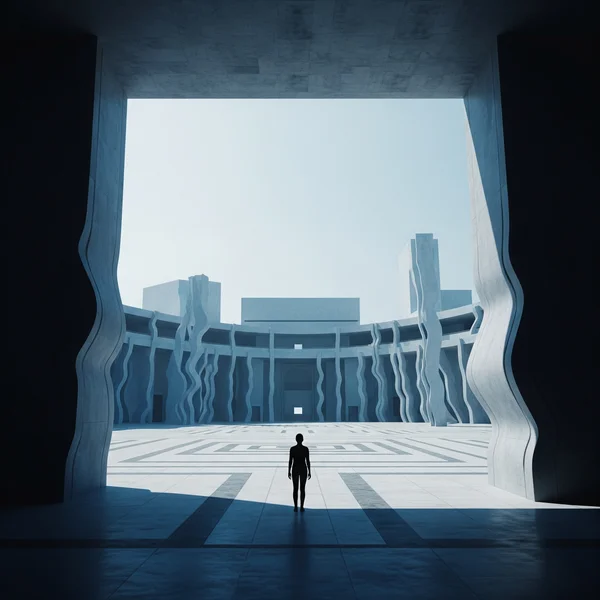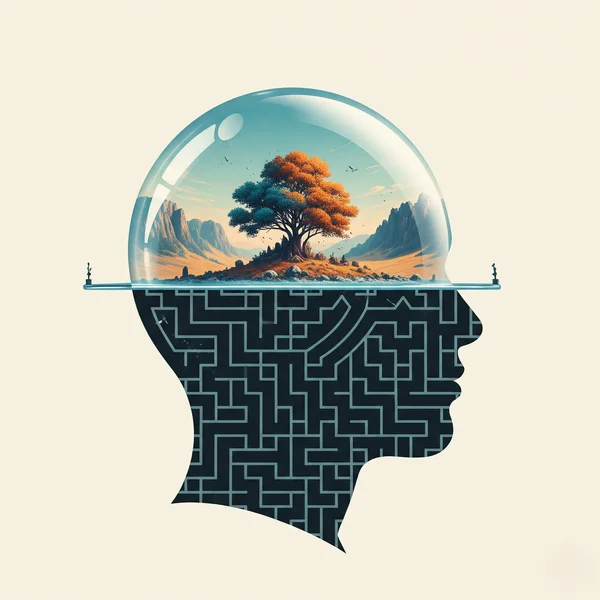Soffro di agorafobia? 10 segnali chiave per saperlo
Sentirsi intrappolati o ansiosi negli spazi pubblici può essere un'esperienza disorientante e isolante. Potresti porti continuamente la domanda: come faccio a sapere se sono agorafobico? Se il pensiero di entrare in un centro commerciale affollato o semplicemente di uscire di casa da solo ti riempie di terrore, sei nel posto giusto. Questa guida ti illustrerà 10 segnali chiave dell'agorafobia. Comprendere questi segnali è il primo passo cruciale verso la chiarezza e la ricerca del giusto supporto. Per un'idea più personalizzata, puoi sempre effettuare un autotest sull'agorafobia in via confidenziale.

Comprendere l'agorafobia: va oltre la semplice paura della folla
Innanzitutto, chiariamo un malinteso comune. L'agorafobia non è semplicemente la paura degli spazi aperti. È un disturbo d'ansia complesso caratterizzato da una paura intensa e dall'evitamento di situazioni in cui l'evasione potrebbe essere difficile o l'aiuto potrebbe non essere disponibile se si dovesse avere un attacco di panico. Questa paura è spesso sproporzionata rispetto al pericolo effettivo della situazione. Le persone con agorafobia non hanno paura dei luoghi in sé, ma piuttosto delle sensazioni terrificanti di panico che associano a quei luoghi.
Paure situazionali principali: segnali chiave dell'agorafobia
I segni più visibili dell'agorafobia sono legati a situazioni specifiche che scatenano intensa paura e ansia. Quali sono i fattori scatenanti dell'agorafobia? Spesso rientrano in queste cinque categorie.
Segnale 1: Paura di usare i mezzi pubblici
- Cosa significa: Eviti attivamente o sopporti con estremo disagio il pensiero di viaggiare su autobus, treni, metropolitane o aerei. Potresti preoccuparti di rimanere bloccato nel traffico o tra una fermata e l'altra, incapace di scendere se inizi a farti prendere dal panico.
- Perché accade: Il trasporto pubblico rappresenta una classica "trappola". Non hai il controllo del movimento del veicolo e una rapida uscita è spesso impossibile, accentuando la sensazione di essere intrappolato.
Segnale 2: Ansia negli spazi aperti
- Cosa significa: Luoghi come parcheggi, mercati o ponti sembrano eccessivamente vasti ed esposti. Potresti sentirti vulnerabile e disorientato, temendo di non avere un posto dove nasconderti se l'ansia ti colpisce.
- Perché accade: La mancanza di confini chiari negli spazi aperti può farti sentire insicuro e non protetto, innescando una risposta di "attacco o fuga".
Segnale 3: Disagio negli spazi chiusi
- Cosa significa: Negozi, cinema, piccole sale riunioni o ascensori possono sembrare soffocanti. La paura principale è l'impossibilità di uscire in modo discreto o rapido se si avverte un'ondata di panico.
- Perché accade: Similmente ai trasporti pubblici, gli spazi chiusi limitano la tua libertà di movimento e la tua capacità di fuga, che è una paura fondamentale nell'agorafobia.
Segnale 4: Terrore di fare la fila o di trovarsi in una folla
- Cosa significa: Il semplice atto di aspettare in fila alla cassa o di trovarsi in una folla a un concerto può essere fonte di immensa ansia. Temi di essere notato se hai un attacco di panico o di non essere in grado di farti strada tra la folla per uscire.
- Perché accade: Le folle rimuovono lo spazio personale e il controllo. La paura dell'imbarazzo pubblico e l'incapacità fisica di fuggire sono potenti fattori scatenanti.
Segnale 5: Paura intensa di stare fuori casa da soli
- Cosa significa: Questo è un segnale distintivo. La paura è così significativa che potresti sentirti al sicuro uscendo di casa solo con un compagno fidato. Il pensiero di sbrigare commissioni o persino di fare una passeggiata da solo è terrificante.
- Perché accade: La casa diventa una "zona sicura". Essere da soli fuori di essa significa non avere aiuto o conforto immediato se si manifestano sintomi di panico.

La paura sottostante: Cosa c'è alla base dell'evitamento?
Oltre ai fattori scatenanti situazionali, l'agorafobia è alimentata da paure profonde su ciò che potrebbe accadere in quelle situazioni. Questa è una parte critica di qualsiasi valutazione della salute mentale.
Segnale 6: La paura opprimente di non poter scappare facilmente
- Cosa significa: In ogni situazione temuta, il tema centrale è "Non posso uscire". Questo schema di pensiero domina il tuo processo decisionale, portandoti a calcolare le vie di fuga prima di entrare in qualsiasi nuovo luogo.
- Perché accade: Questa distorsione cognitiva è il motore dell'agorafobia. L'incapacità percepita di fuggire è più terrificante del luogo stesso.
Segnale 7: Terrore di subire un attacco di panico in pubblico
- Cosa significa: Non sei solo ansioso; hai attivamente paura dei sintomi fisici e mentali di un attacco di panico: tachicardia, respiro corto, vertigini, sensazione di pericolo imminente.
- Perché accade: I passati attacchi di panico creano un potente effetto di condizionamento. Inizi a temere la paura stessa, creando un circolo vizioso di ansia.
Segnale 8: La preoccupazione di essere imbarazzati o di perdere il controllo
- Cosa significa: Potresti preoccuparti: "E se svenissi? E se vomitassi? E se la gente pensasse che sono pazzo?". Questa paura del giudizio sociale può essere paralizzante quanto i sintomi fisici.
- Perché accade: La paura del controllo pubblico attinge al nostro bisogno fondamentale di accettazione sociale. L'agorafobia distorce questo bisogno in una fonte di terrore.
Indicatori comportamentali: come l'agorafobia cambia la tua vita
Queste paure portano inevitabilmente a cambiamenti comportamentali che influenzano significativamente la tua vita quotidiana. Rispondere alla domanda come testa un medico l'agorafobia? spesso implica l'esame di questi cambiamenti comportamentali.
Segnale 9: Evitamento attivo delle situazioni temute
- Cosa significa: Il tuo mondo inizia a rimpicciolirsi. Rifiuti inviti sociali, cambi le tue abitudini di acquisto per andare in orari non di punta (o fai acquisti online esclusivamente), o persino rinunci a opportunità di carriera che implicano viaggi.
- Perché accade: Il comportamento di evitamento è un meccanismo di coping a breve termine che fornisce un sollievo immediato dall'ansia, ma a lungo termine rinforza la paura e rende l'agorafobia più forte.
Segnale 10: Aver bisogno di una persona fidata per andare in giro
- Cosa significa: Diventi dipendente da un coniuge, un familiare o un amico che ti accompagni in qualsiasi uscita che ti sembri minacciosa. La loro presenza funge da segnale di sicurezza.
- Perché accade: Questa dipendenza conferma la tua convinzione di non poter gestire queste situazioni da solo, erodendo ulteriormente la tua autostima e indipendenza.

Per un quadro più chiaro? Effettua il nostro autotest sull'agorafobia
Se hai annuito a diversi di questi segnali, è perfettamente normale sentirsi preoccupati. Leggere un elenco è una cosa, ma capire come questi sintomi si applicano personalmente a te è il passo successivo più importante. Il nostro test sull'agorafobia è progettato sulla base di criteri clinici per aiutarti a quantificare queste sensazioni. È gratuito, confidenziale e fornisce un rapporto istantaneo per darti una comprensione più chiara delle tue esperienze.
Il tuo prossimo passo: dalla comprensione all'azione
Riconoscere questi 10 segnali in te stesso è un atto coraggioso e significativo di consapevolezza di sé. È l'inizio di un viaggio verso il recupero della tua vita dalla paura. Ricorda, non sei solo e l'aiuto è disponibile. Utilizzare strumenti come un test di screening sull'agorafobia può darti le conoscenze necessarie per avere una conversazione sicura con un professionista sanitario.
Domande frequenti sui sintomi dell'agorafobia
L'agorafobia può svilupparsi improvvisamente?
Sì, l'agorafobia a volte può svilupparsi improvvisamente, spesso dopo che una persona ha sperimentato uno o più attacchi di panico inaspettati. La paura di un altro attacco può portare rapidamente a comportamenti di evitamento e all'insorgenza dell'agorafobia.
Qual è la differenza principale tra agorafobia e ansia sociale?
La paura di base è diversa. Nell'ansia sociale, la paura è di giudizio o scrutinio negativo da parte degli altri. Nell'agorafobia, la paura principale è di essere intrappolati e impossibilitati a fuggire da una situazione se si verificano sintomi di panico, indipendentemente dal fatto che ci siano altre persone a giudicarti.
Posso fare un test di screening sull'agorafobia online?
Assolutamente. Sebbene un test online non possa fornire una diagnosi formale, è un eccellente primo passo. Un buon test online sull'agorafobia può servire come un prezioso strumento di screening per aiutarti a organizzare i tuoi pensieri e sintomi prima di parlare con un medico o un professionista della salute mentale.